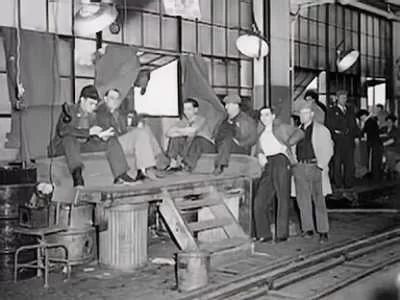Discover the history behind White T-Shirt Day and its roots in the Sit-Down Strike of 1937. Commemorate the courage of workers, their fight for rights, and the enduring symbolism of bean soup and bread.
Table of contents
White T-Shirt Day: Honoring Workers’ Strength, Unity, and the Legacy of the Sit-Down Strike
In a symbolic gesture of solidarity, today marks White T-Shirt Day, urging people to don this simple attire to express support for the working class and their right to unionize. Originally established to commemorate the end of the historic Sit-Down Strike of 1937, this day serves as a reminder of the collective strength of workers advocating for better pay and improved working conditions. The holiday has even earned the moniker “White T-Shirt Day” as a nod to the recommended attire.
The Sit-Down Strike: Flint, Michigan’s Defining Moment
The roots of White T-Shirt Day trace back to the industrial heartland of Flint, Michigan, a city that has seen both triumphs and challenges, from the historic Sit-Down Strike to more recent issues like the water crisis. The pivotal moment occurred when autoworkers at General Motors staged a revolutionary Sit-Down Strike, forever changing the landscape of labor rights.
The strike began when a night shift of autoworkers took a bold stance by locking themselves inside the plant, sitting down in protest and refusing to work. In response, GM attempted to break their resolve by turning off the heat and, shockingly, even cutting off their food supply. However, the workers persisted, enduring weeks of adversity. It wasn’t until President Franklin Roosevelt intervened, urging GM to recognize the autoworkers’ union, that a resolution was achieved. After 44 days, an agreement was signed, bringing an end to the strike.
Bean Soup, Bread, and Commemorative Tradition
Integral to the Sit-Down Strike’s legacy is the sustenance that fueled the workers’ resilience – bean soup and bread. The workers consumed these staple foods during the strike, and as a result, they became emblematic of the struggle and solidarity. To this day, the tradition of lunching on bean soup and bread persists as a way to pay homage to the endurance and unity of those who fought for workers’ rights.
Peaceful Resistance and Consequences

Strikes and boycotts, such as the Sit-Down Strike, are methods employed by workers and consumers to advocate for change and secure concessions from powerful entities. While these techniques are intended to be peaceful, the Sit-Down Strike faced challenges, notably when attempts to cut off the workers’ food supply escalated into violence. Sixteen workers and eleven police officers were injured during this tense period.
A Timely Reminder of Courage and Unity
In the current socio-economic landscape, reflecting on the significance of White T-Shirt Day becomes more pertinent than ever. It serves as a reminder of the courage required to stand up for a living wage, equal rights, and favorable working conditions. The commemoration encourages individuals to acknowledge the strength needed to address power imbalances and the character essential for resolving significant issues through negotiations and non-violence.
Beyond Labels: A Call for Informed Judgment
While celebrating the accomplishments of workers and unions, it’s crucial to acknowledge that neither owners nor workers are infallible. As in any movement, imperfections can emerge, and assumptions based on identity labels should be avoided. Instead, a nuanced understanding should prevail, with judgments grounded in evidence rather than preconceived notions.
On this White T-Shirt Day, let us unite in honoring the legacy of the Sit-Down Strike, recognizing the sacrifices made for workers’ rights, and advocating for a fair and just working environment for all.

